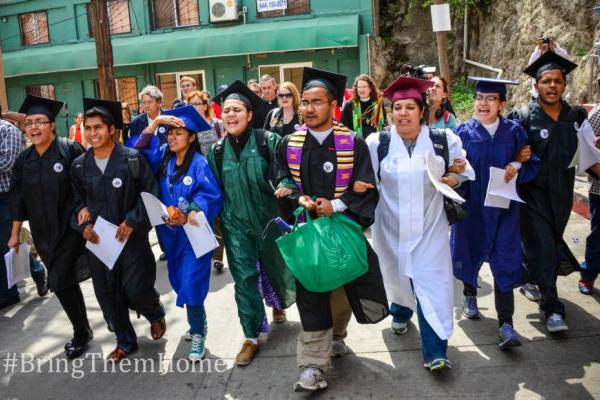On Monday I watched as my young DREAMer friends pause to pray from the “other side” of the fence in Nogales, Mexico before attempting to cross the border back into the Arizona. Rev. John Fife, founder of the Sanctuary Movement, walked with his hand on the shoulder of Marco Saavedra. As he approached the border, a reporter asked Marco if he had anything to say. “Perfect love casts out all fear,” he said. Then he stepped forward into the unknown.
All nine immigrant youth leaders grew up in the U.S., some of them qualify for Deferred Action for Childhod Arrivals, therefore are DREAMers. They chose to leave the U.S. to accompany their undocumented peers, who also grew up here, but who left or were deported because of a broken immigration system. They and their families are victims of the broken U.S. border policy. So “documented” and “undocumented” youth, standing together for justice, met on the Mexico side of the border an attempted to cross back into the U.S. together. They were immediately arrested by Immigration and Customs Enforcement officials and are now detained at the Correction Corporation of America’s private detention center in Eloy, Ariz.
Read the Full Article

